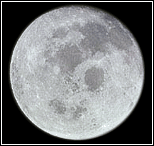History of the Lunar Calendar

The lunar calendar became the basis of the calendars of the ancient Chinese, Babylonians, Greeks, and Jews
 |
Related Links |
During antiquity the lunar calendar that best approximated a solar-year calendar was based on a 19-year period, with 7 of these 19 years having 13 months. In all, the period contained 235 months. Still using the lunation value of 291/2 days, this made a total of 6,9321/2 days, while 19 solar years added up to 6,939.7 days, a difference of just one week per period and about five weeks per century.
Even the 19-year period required adjustment, but it became the basis of the calendars of the ancient Chinese, Babylonians, Greeks, and Jews. This same calendar was also used by the Arabs, but Muhammad later forbade shifting from 12 months to 13 months, so that the Islamic calendar now has a lunar year of about 354 days. As a result, the months of the Islamic calendar, as well as the Islamic religious festivals, migrate through all the seasons of the year.
